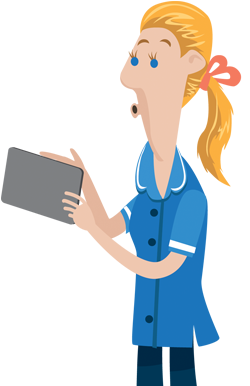How much do I charge?
One of the most important decisions that you will make for your business concerns the issue of price. Your business could be limited in its potential to grow if you choose prices which are too high or too low. It could also be seriously affected in terms of cash flow and sales.
When setting up a physiotherapy practice it is a good idea to think carefully about your pricing strategy first. If you regularly review your prices, you can improve your profitability.
The prices you set initially should allow your business to make a profit. But it is also important to ensure that your prices are competitive.
The difference between cost and value
Knowing the difference between cost and value can increase profitability:
- The amount you spend producing your product or service is the cost
- The amount you receive from your customer for the product or service you are providing is the price
- Whatever your product or service is worth to the customer is the value
For instance, it may cost the physiotherapist $5 in travel expenses to get to the patient's home, another $5 for resistive band and $20 for the hour's work. Yet for the patient, the value may be quite a bit higher than the cost of $30 as the patient now knows how to improve his or her health. In this case the physiotherapist might decide to set the price at $100.
How to create a pricing plan
One important thing that every physiotherapist starting up in business on their own should do is to check out the prices of their competitors. You can do this by contacting physiotherapists in your location and getting a quote.
Unless you have a good reason, you should not set your prices much higher or lower than your competitors. You will lose customers to your competitors if your prices are too high and if they are too low, you will not be maximising your profit. The only way you could charge more is if you are offering a service that nobody else in your area is.
It is also worth knowing that how your product is perceived by customers is very important. Sometimes if your prices are high, patients will think that the service or product you are providing is of the highest quality. But you may also drive other patients away with prices that are just too high.
You may want to offer discounts to some customers. For example if you have regular patients getting regular treatment you may want to price these sessions lower. For one off consultations you can charge a slightly higher price because you will have more work to do on the first consultation due to paperwork etc needing to be completed.
Raising or lowering prices
There will be times when you need to change your prices. But before you do, you should analyse the impact on your profitability of any proposed price change.
There are two key questions you will need to answer:
- What effect will the price change have on the volume of sales?
- What will the effect be on the profit per sale?
Increasing prices
Increasing prices can improve your profitability even though your sales volume may drop.
If you are increasing your prices, always explain to your customers why you are doing it. You can use the price change as an opportunity to re-emphasise the benefits you offer. A good explanation can also strengthen your relationship with a customer.
Reducing prices
You should never take the decision to lower prices lightly. Low prices often go hand-in-hand with poor-quality service - is this the image you want to create for your practice?
Concentrate on building profits rather than cutting prices to build up sales. In most circumstances, your customers decide to buy from you because of the benefits you offer, along with your price. It is rare for the decision to be made on price alone.
Sell the benefits not the features
Patients don't buy on price alone they want to know what you can do for them, not just how much it costs. They want value for money and they may be prepared to pay more for your services if they gain significant benefits or advantages.



